You can closing morphological operation for closing the gaps.
I cat suggest the following stages:
- Find contours in
thresh_gray.
- Erase contours with very small area (noise).
- Erase contours with low aspect ratio (assume zebra line must be long and narrow.
- Use morphologyEx to perform closing morphological operation - the closing merges close components.
- Find contours again in the image after erasing and closing.
At the last stage, ignore small contours.
Here is a working code sample:
import cv2
import numpy as np
image = cv2.imread('d.jpg', -1)
paper = cv2.resize(image, (500,500))
ret, thresh_gray = cv2.threshold(cv2.cvtColor(paper, cv2.COLOR_BGR2GRAY), 200, 255, cv2.THRESH_BINARY)
image, contours, hier = cv2.findContours(thresh_gray, cv2.RETR_EXTERNAL, cv2.CHAIN_APPROX_NONE)
# Erase small contours, and contours which small aspect ratio (close to a square)
for c in contours:
area = cv2.contourArea(c)
# Fill very small contours with zero (erase small contours).
if area < 10:
cv2.fillPoly(thresh_gray, pts=[c], color=0)
continue
# https://stackoverflow.com/questions/52247821/find-width-and-height-of-rotatedrect
rect = cv2.minAreaRect(c)
(x, y), (w, h), angle = rect
aspect_ratio = max(w, h) / min(w, h)
# Assume zebra line must be long and narrow (long part must be at lease 1.5 times the narrow part).
if (aspect_ratio < 1.5):
cv2.fillPoly(thresh_gray, pts=[c], color=0)
continue
# Use "close" morphological operation to close the gaps between contours
# https://stackoverflow.com/questions/18339988/implementing-imcloseim-se-in-opencv
thresh_gray = cv2.morphologyEx(thresh_gray, cv2.MORPH_CLOSE, cv2.getStructuringElement(cv2.MORPH_ELLIPSE, (51,51)));
# Find contours in thresh_gray after closing the gaps
image, contours, hier = cv2.findContours(thresh_gray, cv2.RETR_EXTERNAL, cv2.CHAIN_APPROX_NONE)
for c in contours:
area = cv2.contourArea(c)
# Small contours are ignored.
if area < 500:
cv2.fillPoly(thresh_gray, pts=[c], color=0)
continue
rect = cv2.minAreaRect(c)
box = cv2.boxPoints(rect)
# convert all coordinates floating point values to int
box = np.int0(box)
cv2.drawContours(paper, [box], 0, (0, 255, 0),1)
cv2.imshow('paper', paper)
cv2.imwrite('paper.jpg', paper)
cv2.waitKey(0)
cv2.destroyAllWindows()
thresh_gray before erasing small and squared contours:

thresh_gray after erasing small and squared contours:

thresh_gray after close operation:

Final result:

Remark:
I have some doubts about the benefit of using morphological operation for closing the gaps.
It might be better using a smart logic based on geometry instead.



